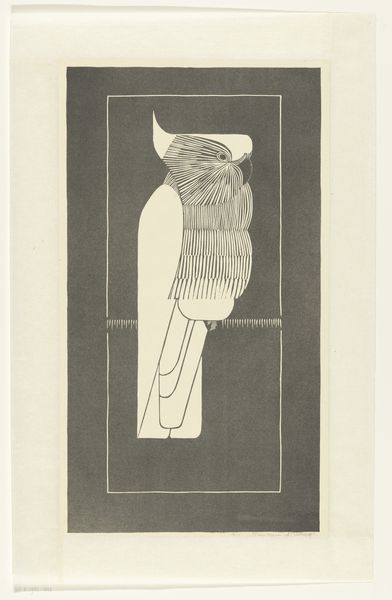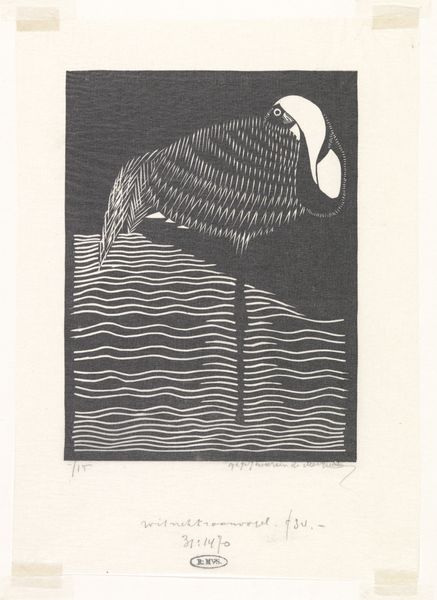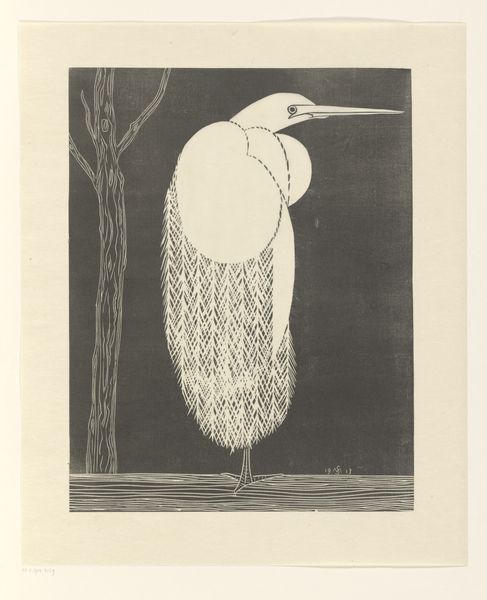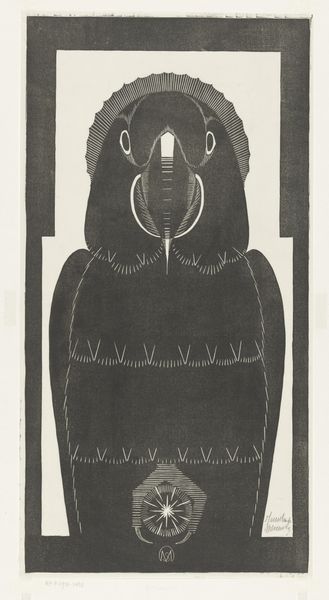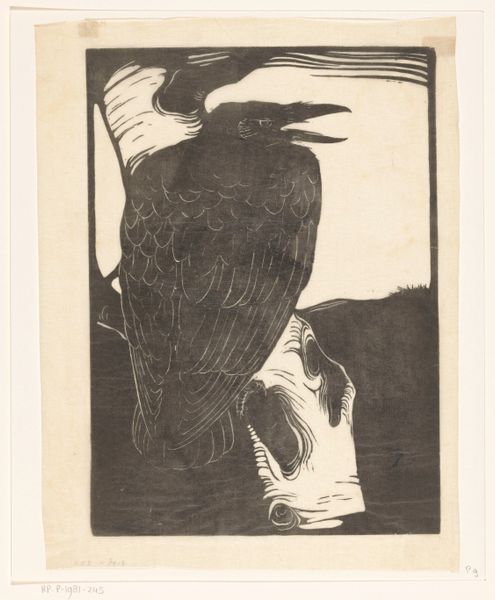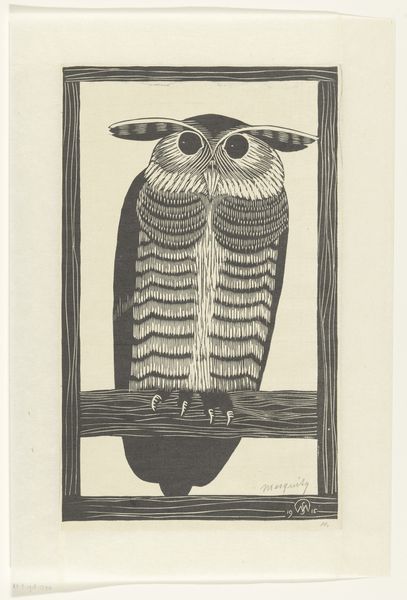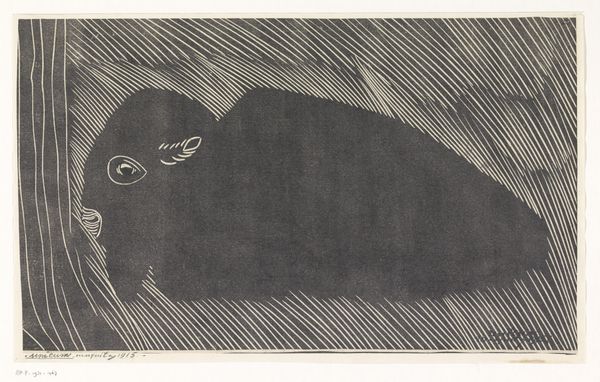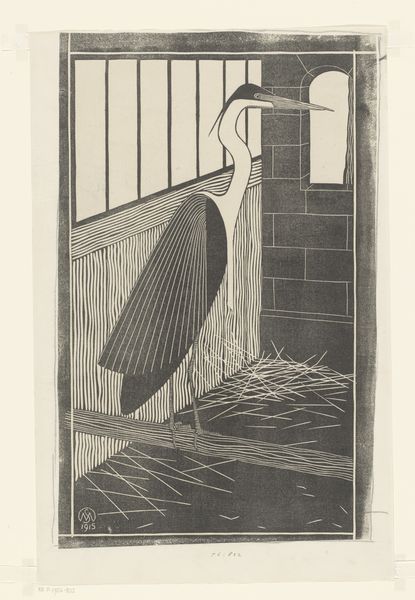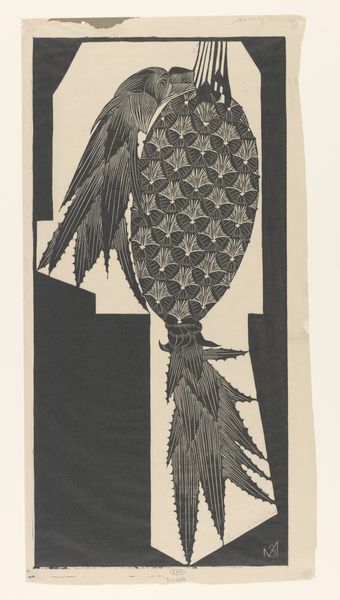
#
quirky illustration
#
childish illustration
#
cartoon like
#
cartoon based
#
old engraving style
#
caricature
#
cartoon sketch
#
limited contrast and shading
#
cartoon style
#
cartoon carciture
Dimensions: height 240 mm, width 173 mm
Copyright: Rijks Museum: Open Domain
Curator: The work before us is "Rosékaketoe," a woodcut made in 1917 by Samuel Jessurun de Mesquita. The stark contrast between the black ink and the paper immediately captures the eye, doesn't it? Editor: Indeed. There’s a sense of confinement that strikes me first—the dense vertical lines almost cage the bird, yet its very simplified form seems quite jovial. Curator: Precisely. The lines serve multiple formal purposes: they create a spatial framework and delineate the negative space, and they amplify the texture of the bird’s plumage, almost as if we were running our fingers through its feathers. Notice how the direction and length of the lines create subtle tonal variations. Editor: Yes, and if we think about woodcut as a printing technique, each of those deliberate cuts would be arduous to execute. Consider also the social position of de Mesquita in early 20th century Amsterdam, teaching graphic arts to a new generation; these sorts of accessible, stylized illustrations brought attention to new possibilities within older mediums. Curator: That’s a salient point. Further, consider the graphic language. The simplification of the bird into almost a caricature calls into question representation itself. Is it a kaketoe, or is it a symbol of a kaketoe? The structural components overshadow mimetic representation. Editor: In focusing on craft, on this older technique as labor and industry, do we challenge ideas about an elitist artistic milieu in which only oils, marble, and bronze count? And where do our biases sit here, with regard to this sort of historical conversation between applied and fine arts? Curator: Your questions expose the dialectic beautifully. Mesquita masterfully exploits the planar surface and line to explore volume and dimension, while questioning the accepted hierarchies in creative output. The limitations of the material offer freedoms—in texture, and symbolic content—for further interpretations. Editor: I’m struck, thinking about the labour involved, at how our exchange today might refocus critical ideas about artistic value. Curator: Yes, by seeing through different lenses, new patterns emerge.
Comments
No comments
Be the first to comment and join the conversation on the ultimate creative platform.
